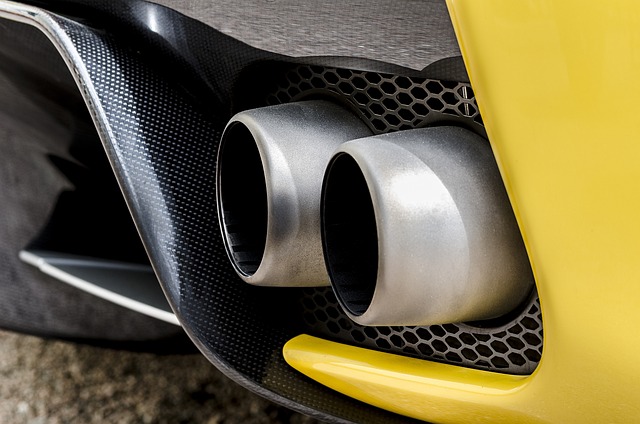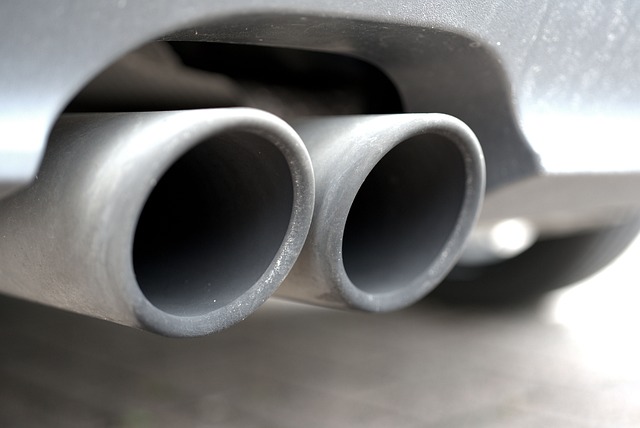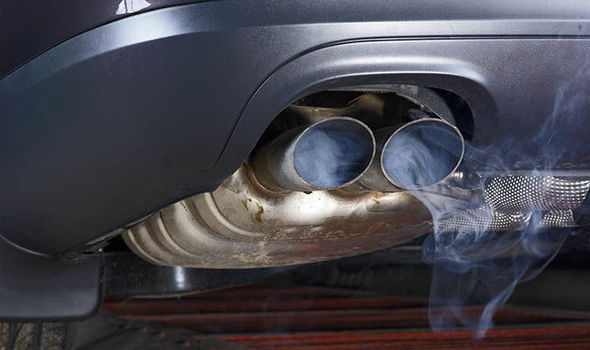MOT tests include an exhaust emission test to protect the environment and public health. It checks the harmful gases that vehicles release into the air. By doing this test, they make sure cars follow rules for clean air.
It also helps identify and fix engine problems early, saving money and making driving safer. It’s essential for a healthier planet and a better driving experience.
What is an mot test?
An MOT test is a yearly check for older vehicles to ensure they are safe and meet environmental standards. It’s mandatory in many places like the UK. During the test, a qualified mechanic inspects things like lights, brakes, tires, and exhaust.
If the vehicle passes, it gets an MOT certificate valid for one year. If it fails, the owner must fix the problems and retest. Driving without a valid MOT can lead to penalties. Remember, rules may vary by country, so follow local guidelines for vehicle safety checks.
What is an emission test?
An emission test is a checkup for vehicles to measure the pollutants coming from their exhaust pipes. It examines harmful gases like carbon monoxide (CO) and nitrogen oxides (NOx) to ensure the car meets environmental standards.
This test is essential to keep the air clean, protect public health, and make sure vehicles aren’t emitting too many harmful substances. It helps identify cars that need repairs or maintenance to reduce emissions and follow the rules for a cleaner environment.

What is checked on an mot?
A number of main things are usually checked in an MOT test. Let’s explore them below:
- Suspension
- Wheels and tyres
- Body Structure
- Lights and signals
- Steering
- Seat belts
- Brakes
- Exhaust emissions
- Horn
- Fuel emissions
- Windscreen and Mirrors
- Vehicle identification
- Doors and Latches
Benefits of passing exhaust emission tests
Passing exhaust emission tests offers several benefits include:
Environmental Impact
Vehicles emitting fewer pollutants help reduce air pollution and its negative effects on the environment and public health.
Compliance
Complying with emission standards ensures that the vehicle meets legal requirements, preventing fines or penalties.
Fuel Efficiency
A well-maintained vehicle with lower emissions is often more fuel-efficient, saving money on fuel costs.
Vehicle Longevity
Regularly passing emission tests indicates a well-maintained vehicle, potentially extending its lifespan.
Public Health
Reduced emissions contribute to better air quality, leading to improved respiratory health for everyone.
Resale Value
Vehicles with a clean emission record generally have a higher resale value.
Government Incentives
Some regions offer incentives, such as reduced registration fees or tax benefits, for vehicles that pass emission tests.
What are the common causes of emission failures?
The most common reasons for emission failures during MOT tests or other emissions checks are:
- Faulty Oxygen Sensor: The oxygen sensor’s job is to measure exhaust oxygen levels for a proper fuel mixture. If it’s faulty, emissions may rise.
- Dirty Air Filter: A clogged air filter affects engine airflow, leading to higher emissions.
- Worn Spark Plugs: Old spark plugs can cause incomplete fuel burning, resulting in increased emissions.
- Catalytic Converter Issues: A damaged converter can’t reduce emissions effectively.
- Fuel System Problems: Leaky injectors or faulty fuel regulators can lead to excessive emissions.
- Ignition System Troubles: Problems with coils or ignition timing affect emissions.
- EGR System Malfunction: A faulty EGR system raises nitrogen oxide (NOx) emissions.
- Evaporative Emissions System: Faulty parts cause increased hydrocarbon emissions.
- Vacuum Leaks: Leaks disrupt engine performance, leading to higher emissions.
- High Mileage: Older vehicles with high mileage may have more emission-related wear.
- Tampering or Modifications: Unauthorized changes to the emission system can cause higher emissions.

Tips for ensuring emission test success
There are some tips to ensure the success of the emission test such as:
- Stick to a scheduled maintenance routine, including oil changes, air filter replacements, and spark plug checks.
- Warm up the engine by driving for at least 15-20 minutes before the test to ensure it reaches optimal operating temperature.
- Correct tire pressure improves fuel efficiency and reduces emissions.
- Filling up with high-quality fuel can aid in cleaner combustion and lower emissions.
- Address any check engine light issues promptly and replace faulty components affecting emissions.
- A malfunctioning oxygen sensor can impact emissions, so replace it if necessary.
- If the catalytic converter is damaged or worn out, consider replacing it.
- Regularly clean or replace the air filter to ensure proper airflow to the engine.
- Avoid rapid acceleration and hard braking, as smooth driving can reduce emissions.
- Some fuel additives can help clean the fuel system and reduce emissions.
- Remove unnecessary items from the vehicle to improve fuel efficiency and emission levels.
- Ensure the gas cap is tight to prevent fuel vapor leaks.
Moreover, by using this advice, you may improve your car’s performance and raise the chance that it will pass the emission test.
In addition, keep in mind that safe driving and routine maintenance not only enhance test results. But also help to keep the environment cleaner and healthier.
How does the MOT emission test work?
Generally, the MOT emission test is also known as the exhaust emission test. It is conducted to check the pollutants emitted by a vehicle’s exhaust system.
Also, it determines whether the vehicle’s emissions meet the regulatory authority’s environmental guidelines. The test is usually conducted as part of the overall MOT test. Which includes various safety and environmental checks. Let’s take a look at how the MOT emissions test works below:
Test Equipment
The testing equipment consists of a gas analyzer. Which measures the concentration of different exhaust gases emitted by the vehicle.
Test Procedure
During the test, the vehicle is placed on a specialized testing platform, and a probe is inserted into the tailpipe to collect a sample of exhaust gases.
Idle Test
The first part of the test is the idle test, where the engine is left to idle while the gas analyzer measures the emissions. This tests the vehicle’s emissions when it’s stationary.
Acceleration Test
The second part is the acceleration test, where the engine is revved up to a certain RPM (revolutions per minute) while the gas analyzer measures the emissions. This tests the vehicle’s emissions under load and simulates driving conditions.
Comparing Results
The gas analyzer provides readings for various gases such as carbon monoxide (CO), hydrocarbons (HC), and nitrogen oxides (NOx). These readings are then compared to the emission standards set by the authorities.
Pass or Fail
If the vehicle’s emissions are within the allowed limits, it passes the emission test. If the emissions exceed the set limits, the vehicle fails the test.
Retesting
If the vehicle fails the emission test, the owner must address the issues that caused the failure and have the vehicle retested. Once the vehicle meets the emission standards, it receives an MOT certificate.
How can emissions affect your mot?
Emissions can greatly affect your MOT test include:
- During the MOT test, they measure the pollutants from your car’s exhaust.
- If your car emits too many pollutants, it will fail the test.
- Failing the MOT test means you can’t legally drive your car until it’s fixed.
- Vehicles with excessive emissions harm the environment and public health.
- Fixing emission issues can be expensive.
- Your car won’t be eligible for road tax and insurance renewal until it passes the MOT test.
- To avoid these problems, maintain your car well and fix any emission-related issues promptly.
How can I reduce my car’s emissions for mot?
Generally, reducing your car’s emissions not only helps the environment. But can also improve fuel efficiency and save you money. Here are some ways to reduce your car’s emissions for mot:
- Keep your car well-maintained with regular tune-ups, air filter changes, and oil checks. A healthy engine emits fewer pollutants.
- Keep your tires inflated to the correct pressure for better fuel efficiency and lower emissions.
- Avoid aggressive driving, sudden acceleration, and hard braking. Smooth driving saves fuel and reduces emissions.
- Shift to higher gears earlier while accelerating to lower engine revs and save fuel.
- Turn off the engine if you’ll be stopped for more than a minute to reduce unnecessary emissions.
- Carpool or plan your trips to reduce the number of separate journeys.
- Air conditioning uses more fuel. Use it wisely to save on emissions.
- Clear out unnecessary items from your car to reduce weight and save fuel.
- Avoid stop-and-go traffic by selecting less crowded routes to cut emissions.
- Ensure your car’s emission control systems, like the catalytic converter, work correctly.
- Use eco-friendly driving techniques to optimize fuel consumption and reduce emissions.
- If possible, upgrade to a more fuel-efficient or hybrid/electric vehicle.
What are the rules on mot test emissions?
Here are the important rules for MOT test emissions:
- Your vehicle will not emit any visible smoke from its exhaust.
- Your car’s exhaust must not produce too much harmful gas, either for petrol or diesel engines.
- The Diesel Particulate Filter (DPF) in your vehicle can’t be tampered with or eliminated.
- If the engine light is on, showing an emission or DPF problem, your car will fail the test.
What are the 2 types of mot?
There are two types of MOT: Class 4 and Class 7 mot tests. Class 4 is for passenger cars, which is the most common one. Class 7 is for commercial goods vehicles weighing between 3,000 kg and 3,500 kg. Class 4 covers most cars, while Class 7 is for heavier commercial vehicles.
How long does a mot take?
An MOT test usually takes about 1 hour. If your car fails, some MOT centers may offer immediate repairs if possible. The duration may vary. But typically, it’s a straightforward process that ensures your car meets safety and environmental standards.
When does a new car need a mot?
New cars don’t need an MOT until they are three years old, as per the law. However, you can choose to get an MOT for your new car earlier if you wish. It’s up to you. But legally, it’s mandatory only when the car reaches three years of age.
Final Verdict
MOT tests check vehicle emissions to make sure they meet environmental standards and reduce harmful pollutants. This helps keep the air clean and protects the environment. Monitoring emissions is essential for eco-friendly transportation and a healthier planet.

